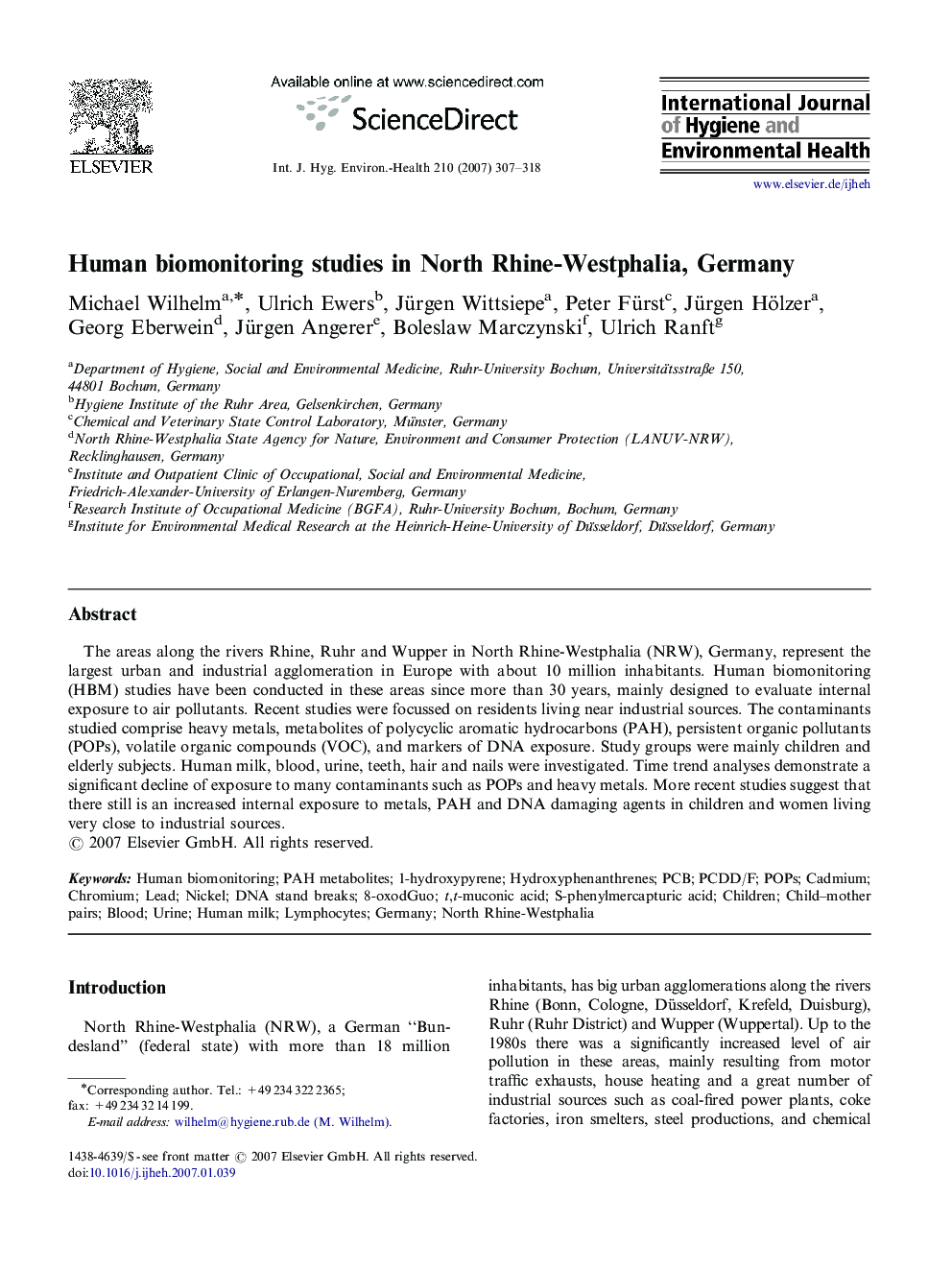| Article ID | Journal | Published Year | Pages | File Type |
|---|---|---|---|---|
| 2589000 | International Journal of Hygiene and Environmental Health | 2007 | 12 Pages |
The areas along the rivers Rhine, Ruhr and Wupper in North Rhine-Westphalia (NRW), Germany, represent the largest urban and industrial agglomeration in Europe with about 10 million inhabitants. Human biomonitoring (HBM) studies have been conducted in these areas since more than 30 years, mainly designed to evaluate internal exposure to air pollutants. Recent studies were focussed on residents living near industrial sources. The contaminants studied comprise heavy metals, metabolites of polycyclic aromatic hydrocarbons (PAH), persistent organic pollutants (POPs), volatile organic compounds (VOC), and markers of DNA exposure. Study groups were mainly children and elderly subjects. Human milk, blood, urine, teeth, hair and nails were investigated. Time trend analyses demonstrate a significant decline of exposure to many contaminants such as POPs and heavy metals. More recent studies suggest that there still is an increased internal exposure to metals, PAH and DNA damaging agents in children and women living very close to industrial sources.
